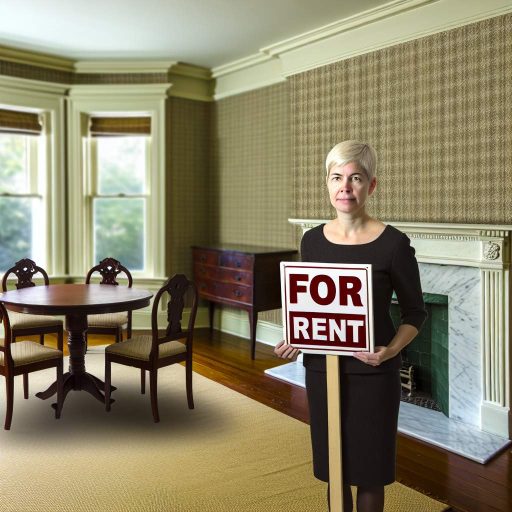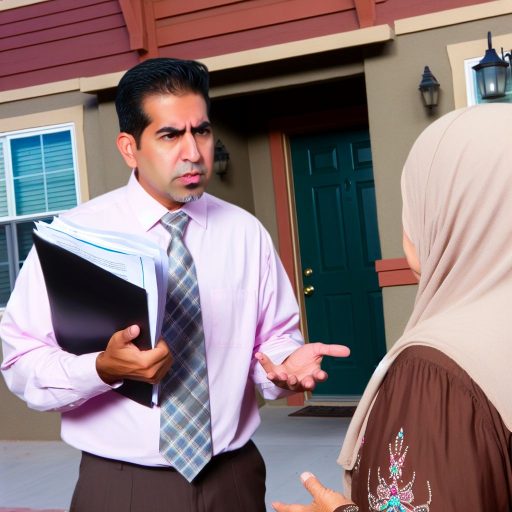Understanding the Importance of Lease Agreements in Tenant Relationships
Establishing Clear Expectations
Lease agreements create a framework for tenant and landlord interactions.
This document outlines the rights and responsibilities of each party.
Clearly defined rules prevent misunderstandings and disputes.
For instance, agreements specify payment due dates and accepted payment methods.
Such clarity fosters a smooth relationship between tenants and landlords.
Reducing the Risk of Disputes
Well-crafted lease agreements help minimize conflicts.
They address potential issues before they escalate into disputes.
Topics like maintenance responsibilities and property usage can be detailed.
By covering these aspects, both parties know what to expect.
Thus, lease agreements serve as a reference point during conflicts.
Providing Legal Protection
Lease agreements offer legal protection for both parties.
If disputes arise, the lease can be presented in court as evidence.
This legally binding contract ensures compliance with local laws.
Moreover, it protects the rights of tenants and landlords alike.
Understanding these protections reinforces the importance of having a lease.
Encouraging Open Communication
Lease agreements promote dialogue between tenants and landlords.
Both parties can refer to the document to discuss grievances or changes.
This proactive communication strategy strengthens the tenant-landlord relationship.
Regular check-ins based on the lease can help maintain ongoing dialogue.
As a result, misunderstandings can be resolved more effectively.
Key Components of a Comprehensive Lease Agreement
Essential Definitions
Begin by clearly defining key terms in the lease agreement.
Include definitions for “landlord,” “tenant,” and “premises.”
Clearly state what constitutes a breach of the agreement.
Use clear and concise language to avoid confusion.
Property Details
Outline the specific property being leased.
Provide the property address and any specific unit numbers.
Clearly detail any amenities included in the lease.
Include information about common areas and shared facilities.
Lease Term and Rent Payment
Specify the duration of the lease agreement.
Clearly outline start and end dates of the lease period.
Detail the rental amount due and acceptable payment methods.
Include information about late fees and grace periods.
Security Deposit Terms
Clearly state the amount of the security deposit.
Specify the conditions under which the deposit is refundable.
Detail any deductions that may be taken from the deposit.
Landlord and Tenant Responsibilities
Outline the responsibilities of both the landlord and tenant.
Clearly define maintenance and repair obligations.
Include clauses regarding property alterations and improvements.
Rules and Regulations
Include any rules that tenants must follow.
Detail restrictions on smoking, pets, or noise levels.
Clearly state the consequences of violating these rules.
Termination and Renewal Clauses
Include conditions for terminating the lease agreement.
Specify notice periods required for termination.
Outline renewal options and procedures for the lease.
Dispute Resolution
Establish a process for resolving disputes between parties.
Consider mediation or arbitration as viable options.
Clearly define jurisdictions and applicable laws for disputes.
The Role of Clear Communication in Lease Agreements
Importance of Clear Terms
Clear terms in lease agreements set the foundation for expectations.
They help avoid misunderstandings between tenants and landlords.
Furthermore, specific language prevents potential legal disputes.
Effective Communication Channels
Using proper communication channels is crucial for clarity.
Email can document conversations effectively for future reference.
Phone calls allow for immediate discussions and clarifications.
Face-to-face meetings build trust and foster better relationships.
Regular Updates and Check-ins
Regular communication reduces the chances of disputes greatly.
Scheduled check-ins allow tenants to voice concerns promptly.
Landlords gain insights into tenant satisfaction and issues.
Inclusive Language
Using inclusive language fosters a respectful environment.
Avoiding jargon makes documents accessible to all parties.
Consequently, all parties understand their rights and responsibilities.
Documenting Conversations
Documenting conversations helps maintain a clear record.
Minutes from meetings protect both parties in case of disagreements.
Written records serve as evidence if future disputes arise.
Encouraging Open Dialogue
Encouraging open dialogue strengthens tenant-landlord relationships.
Both parties should feel comfortable voicing concerns or suggestions.
Ultimately, this leads to a more positive living experience.
Explore Further: Marketing Strategies for Filling Rental Vacancies in Competitive Markets
Common Disputes Between Landlords and Tenants and How to Prevent Them
Understanding Common Disputes
Tenant disputes frequently arise over various issues.
Typically, disagreements involve rent payments or property maintenance.
Additionally, security deposits can also be a source of contention.
Moreover, compliance with lease terms often leads to disputes.
Rent Payment Issues
One major dispute focuses on timely rent payments.
Late payments can cause stress for both landlords and tenants.
To counteract this, establish clear payment deadlines in the lease.
Also, consider offering multiple payment methods.
This flexibility can foster better communication and trust.
Property Maintenance Responsibilities
Maintenance issues frequently lead to arguments between parties.
Landlords must ensure properties remain in good condition.
On the other hand, tenants should report problems promptly.
Clearly define maintenance responsibilities in the lease agreement.
Include specific timelines for resolving issues to enhance accountability.
Security Deposit Disputes
Security deposits are a common area of conflict.
Tenants often feel their deposits are unfairly withheld.
Landlords may argue that damage justifies retaining deposits.
Clearly outline the conditions for refunding the security deposit.
Conduct a move-in inspection to document the property’s condition.
Adhering to Lease Terms
Disputes may arise when lease terms are not followed.
For instance, unauthorized pets can lead to disagreements.
Both parties should understand their obligations outlined in the lease.
Review the lease agreement together before signing to ensure clarity.
This practice minimizes misunderstandings later on.
Effective Communication Strategies
Good communication can prevent many disputes.
Maintain open channels for discussing issues as they arise.
Regular check-ins can facilitate smooth relationships between landlords and tenants.
Utilize written communication for important discussions.
This helps avoid misinterpretations and provides a record of agreements.
Gain More Insights: Why Professional Photography Matters in Rental Property Marketing
Legal Implications of Lease Agreements
Understanding Lease Agreements
A lease agreement outlines the relationship between landlord and tenant.
This document defines rights and responsibilities of both parties.
It is essential for preventing misunderstandings and disputes.
Understanding the terms of the lease is crucial for both parties.
Key Components of a Lease Agreement
Several important elements create a solid lease agreement.
First, the lease must specify the rental amount and payment due dates.
Second, it should outline the duration of the lease term.
Third, the lease must include rules regarding security deposits.
Moreover, it should detail maintenance responsibilities for both parties.
Lastly, it must establish procedures for terminating the lease.
Rights and Responsibilities of Tenants
Tenants possess specific rights under a lease agreement.
For instance, they have the right to a safe and habitable living space.
Also, tenants can expect privacy in their rented space.
Consequently, landlords cannot enter without proper notice.
Additionally, tenants must adhere to lease rules and pay rent on time.
Rights and Responsibilities of Landlords
Landlords also have distinct rights and responsibilities.
Primarily, they have the right to receive timely rent payments.
Moreover, landlords should maintain the property in good condition.
They must respect tenant privacy and give notice before entering.
Furthermore, landlords have the obligation to follow eviction procedures legally.
Consequences of Breaching a Lease Agreement
Breaches of lease agreements can lead to serious consequences.
Typically, landlords may initiate eviction proceedings for non-payment.
Tenants may also face penalties for violating lease terms.
Additionally, a breach can affect future rental applications negatively.
Ultimately, understanding breaches helps prevent disputes.
Importance of Legal Consultation
Consulting a legal expert can significantly benefit both parties.
Lawyers can help draft clear and enforceable lease agreements.
Furthermore, they clarify legal obligations and rights for landlords and tenants.
They can also assist in resolving disputes before they escalate.
Taking proactive measures in lease agreements curtails conflicts.
See Related Content: Property Inspections for Home Buyers

Strategies for Including Conflict Resolution Clauses in Lease Agreements
Identifying Common Conflict Areas
Landlords and tenants often face disputes over lease terms.
Understanding these areas can help in drafting effective agreements.
Typical conflict areas include security deposits, maintenance responsibilities, and lease termination.
Incorporating Clear Language
Use plain and precise language when drafting lease agreements.
Avoid jargon to ensure both parties understand their rights and obligations.
Clearly define terms like “maintenance” and “damage” to prevent confusion.
Establishing a Resolution Process
Include a step-by-step process for handling disputes in the lease agreement.
Start with informal discussions to resolve minor issues.
If necessary, progress to mediation before pursuing legal actions.
Setting Timelines for Responses
Specify deadlines for responses related to conflict notifications.
This encourages timely communication between landlords and tenants.
Establishing clear timelines helps keep disputes from escalating.
Including Mediation and Arbitration Clauses
Mediation can facilitate open communication and understanding.
Consider requiring mediation before any legal proceedings.
Arbitration can also provide a binding solution if mediation fails.
Regularly Reviewing Lease Agreements
Encourage scheduled reviews of lease agreements to adjust terms.
Regular updates can reflect changing laws and market conditions.
This proactive approach can significantly reduce misunderstandings.
Uncover the Details: Lease Agreements for Rent-Controlled Units
The Benefits of Regular Lease Reviews and Updates
Regular lease reviews help clarify terms for both landlords and tenants.
This process minimizes the chance of miscommunication.
Clear communication is essential for maintaining positive relationships.
Preventing Misunderstandings
Updating lease agreements ensures compliance with current laws.
Landlords must stay informed about legal changes that affect leases.
Tenants benefit from protections provided by updated legislation.
Adapting to Changing Laws
Regular reviews can enhance tenant satisfaction and retention.
Happy tenants are more likely to renew their leases.
Additionally, satisfied tenants often lead to word-of-mouth referrals.
Improving Tenant Satisfaction
Lease reviews allow property owners to identify recurring issues.
By addressing these areas proactively, landlords can prevent disputes.
This approach fosters a more cooperative living environment.
Identifying and Addressing Issues
Updating lease agreements can improve property management practices.
Good management practices help maintain the property’s value.
A well-maintained property attracts quality tenants.
This ultimately increases long-term profitability for landlords.
Maintaining Property Value
Regular updates set clear expectations for behavior and responsibilities.
Both parties understand what is expected of them.
This clarity reduces potential conflicts and enhances cooperation.
Establishing Clear Expectations
Case Studies: Successful Lease Agreements That Prevented Tenant Disputes
Introduction to Case Studies
Lease agreements play a vital role in fostering harmony between landlords and tenants.
By examining real-life examples, we can uncover effective practices.
These practices significantly reduce the potential for disputes.
Case Study: Maplewood Apartments
Maplewood Apartments implemented clear communication protocols.
The management team regularly communicated lease expectations.
This transparency helped prevent misunderstandings.
Consequently, tenant satisfaction increased, leading to fewer disputes.
Key Features of the Lease Agreement
- The lease included explicit clauses about maintenance responsibilities.
- It outlined procedures for reporting issues promptly.
- Rent payment terms were clearly stated to avoid confusion.
Case Study: Greenfield Townhomes
Greenfield Townhomes utilized a structured mediation process.
This process addressed tenant complaints efficiently.
When disputes arose, tenants could engage in mediation before formal actions.
The approach fostered a collaborative atmosphere among residents.
Important Elements of the Mediation Process
- Tenants participated in mediation sessions with trained mediators.
- The agreement encouraged open dialogue about concerns.
- Follow-up meetings ensured that solutions were effective.
Case Study: Willow Creek Bungalows
Willow Creek Bungalows introduced a community-focused lease agreement.
This included shared responsibilities among tenants for communal areas.
By encouraging communal decision-making, disputes over shared spaces diminished.
This approach fostered a sense of community among renters.
Community Engagement Tactics
- Organized regular tenant meetings to discuss shared concerns.
- Established a neighborhood committee to address communal issues.
- Promoted events to enhance community bonding and trust.
These case studies illustrate the effectiveness of well-designed lease agreements.
By prioritizing clear communication and community involvement, landlords can prevent disputes.
Investing in lease solutions enhances tenant satisfaction and retention.




